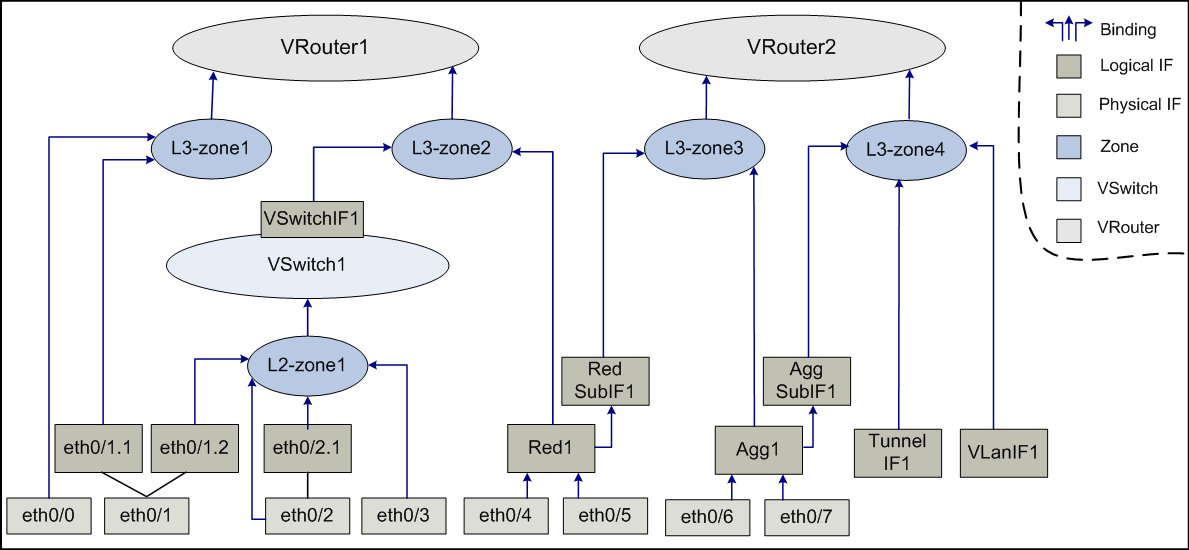
Virtual Router (VRouter) is known as VR. VR acts as a router, and different VRs have their own independent routing tables. A VR named “trust-vr” is bundled with the system, and by default all the Layer 3 security zones are bound to trust-vr automatically. System supports multiple VRs, and the max amount of supported VRs may vary from different hardware platforms. Multiple VRs divide a device into multiple virtual routers, and each of the routers utilizes and maintains their completely independent routing table. In such a case one single device is acting as multiple routers. Multiple VRs allow a device to achieve the effects of the address isolation between different route zones and address overlapping between different VRs, as well as to avoid route leaking to some extent, enhancing route security of network. For more information about the relationship between interface, security zone, VSwitch and VRouter, see the following diagram:

As shown above, the binding relationship between them are:
Related Topics: